Urban Response to the COVID- 19 Pandemic
The field of urban planning has always evolved with the cultural trends, and major crisis played its role. The cholera epidemic in the 19th century gave birth to the concept of the sanitation system. Respiratory disease in overcrowded slums of Europe necessitated the introduction to housing regulations around light and air. This era of digitalisation has also changed the way we perceive our cities today.
The COVID pandemic has significantly altered the city life. The cities like Mumbai, New York, Paris that never used to sleep has as if stopped. The streets are empty, movement of people have considerably dropped. Not all people have the privilege of practicing social distancing. Densely populated areas such as slums areas can only dream of social distancing. The only prevention found so far is handwashing, and some disadvantaged do not have access to clean water. These changes have led to a debate on how resilient cities should be built and how to prepare cities for a better response to the current pandemic and future crisis. The three key areas, i.e. density, mobility, and water supply, will be affected most in years to come.
Impact of Density on the Pandemic Situation
As we collectively wonder how this pandemic will shape the future of cities, it’s crucial to recognize what makes cities so remarkable: density. How will this change as density is now considered a public health issue? It is quite painful to realize that what makes cities prominent is the proximity of people to one another, is now making them susceptible to the pandemic. Density in this uncertain time has become a problem. Experts claim that “With a population density of 2,27,136 persons per sq. km Dharavi, Asia’s largest slum in Mumbai is a sort of ticking time bomb for the civic administration, which is working on a war footing to contain the pandemic”. This makes us question the concept of compact development. This makes us rethink about high-density development versus sprawl development.
Density has its urban perks. It lets us enjoy the rich, diverse culture say in terms of variety of restaurants, shopping centres or entertainment centres like multiplexes gaming zones. Density enables the provision of affordable housing. It facilitates infrastructure development. It makes mass transit viable. It allows us to curb climate emissions. The fact that high-density development is environmentally sustainable and energy-efficient cannot be denied. Now the question is, how do we enjoy the benefits of density while keeping the society safe from the threat of a pandemic?
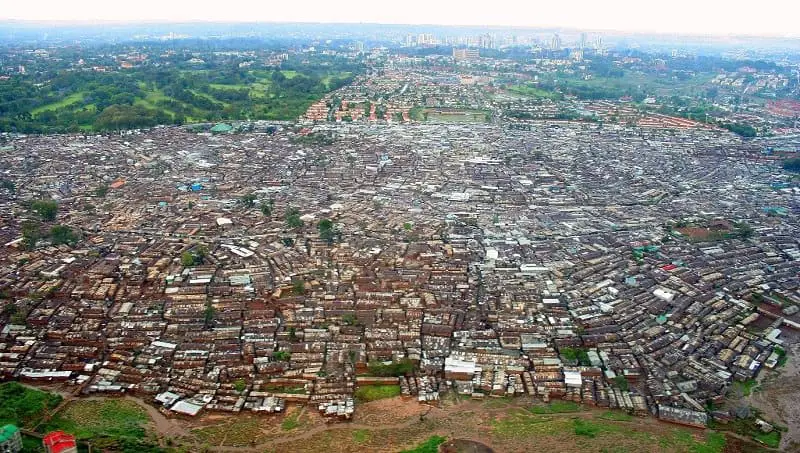
We have come up with social distancing policy, and all of the sudden density becomes a problem. But if we see, it is such a narrow-angle to focus on the issue. The complexity of COVID 19 crisis should also be embraced to come to a better solution. When we examine more closely the cities like Wuhan, which has gone through an entire cycle of COVID 19, and we plot population density against the incidence, we find no clear relationship. It’s not that the cities that have a higher population ended up having been more affected. It was quite the opposite because cities have higher population density and having higher absolute population figures ended up having more extensive public facilities and hospital being more equipped, more resources etc. With its benefits, density is definitely not an enemy in the battle against the pandemic.
The outbreak of pandemics or epidemics like Ebola, Cholera etc. have led to us rethinking the way planning should be done. In order to cherish the benefits of density, even in the pandemic, there is a need for integrated, holistic, and sustainable development. For density to produce the plus side and not downside, the density has to be planned and managed well. The government of the cities will have to plan in advance for the population growth and provision of services, infrastructure and housing. This will ensure that the urbanization process does not lead to the formation of informal settlements. It is evident that high density is not the problem; housing standards are the problem. While defining housing shortage and planning for that, it is now a need to incorporate the health criteria in the policies. The carpet area proposed by the Ministry of Housing and Urban Affairs of India, for Economically Weaker Section (EWS) and Lower Income Group (LIG) is 30 sq. meters, and 60 sq. meters respectively and the minimum area for the habitable room is 7.50 sq. meters. Can we expect to have social distancing for a household size of 8 in such a small area? These standards have to be revisited. A proper guideline for compact development can keep us away from the risk of any disaster. A city should be developed only up to livable density in order to achieve the balance where benefits of density can be enjoyed but not at the risk of healthy living standards.
Related: Pragmatic Approach to Slum Rehabilitation in Mumbai City (Part 1 of 4), Causes of Urban Poverty
Travel demand management strategies to aid mobility
Mobility will be a huge concern post lockdown for obvious reasons. People will want to go to make trips for purposes such as work, education, recreational etc. and all this would not be possible without a mode of transport. Due to the importance of social distancing, it will be essential for private modes like 2-wheelers where only a single person can travel to adhere to social distancing, and for cars a driver +2 maybe allowed.
Post lockdown to avoid the spread of COVID19, the demand responsive transport systems like the Uber/Ola or other cab services will inevitably lead the mobility provision markets due to their comfortable and safer service(excluding the pool/share services). Demand responsive systems will take care of the distancing and sanitizing norms as they ought to provide convenience to customers for the continuity of their business. Public transport will be considered risky as it is a mass transit system. Several norms need to be set up before starting the public transport services. In the case of metro cities like Mumbai, Delhi, San Francisco, Singapore and Tokyo where a massive proportion of population travel by public transport, it will require an intensive effort and care to manage the crowd and follow the norms for the safe functioning of the public transport systems.
The Urban Local Bodies needs to provide solution and be confident on the usage of these policies and recommendations, as we don’t have a second chance against the COVID19 pandemic. Amid the lockdown, it can be seen that the people in India were successful in following the lockdown, but not all did. Many examples were seen where the police reprimanded people for not following the lockdown. This shows us the clear picture that the major problem here is the implementation and monitoring of the process. Therefore even if the urban local bodies is successful in providing safe mobility post-pandemic, it is difficult to ensure that the users will not transgress the safety norms.
To gain more clarity amid this chaos, there’s nothing better than hit and trial method. As they say, “Necessity is the mother of invention”, the post lockdown situation is the best period to try out new measures that can control the pandemic from spreading and also provide sustainable and environmentally friendly means of mobility. The Urban Local Bodies has to try out a specific set of recommendations to check whether they work efficiently. In terms of mobility, people cannot stop making trips; thus, the transport sector cannot be restricted, but specific guidelines can be recommended to minimize the movement.
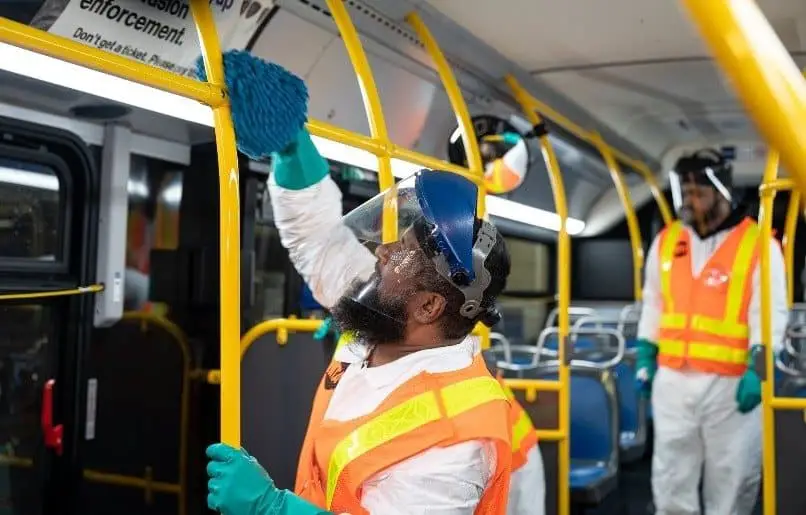
There is a need for well-planned recovery options. One such solution is starting the public transport at 20-30% capacity and gradually increasing the capacity to say 50-60% as the situation gets better. Sanitizing and maintaining safety is essential to ensure that the passenger feels safe to travel. It was also observed that the IT sector could work efficiently and were able to adapt “Work From Home (WFH)” culture as compared to the other sectors. If it is feasible, the IT sector can incorporate WFH policy for at least 50% of their employees. This will considerably reduce work-trips. For other private vehicles, Odd-Even scheme can be considered to further reduce the traffic on roads which will, in turn, lead to reducing congestion as well as reducing the harmful emissions. As for the demand-responsive systems, the cab services like Ola and Uber would surely increase after lockdown as people feel safer to travel in cabs and also finding a parking spot is not a headache.
As in case of urban freight, with the increasing number of people staying at home for a long time in a feeling of fear of going out, the E-commerce market would go up i.e the necessity for freight and logistics would go up increasing the freight traffic on the roads for delivery of the goods by the E-commerce platforms as well as their movement from various cities to the required places. According to a survey by NRF(National Retail Federation) 9 in 10 consumers have changed their traditional shopping habits, more than 50% of consumers have ordered products online that they would normally purchase at the store and nearly 6 in 10 consumers say they are worried about going to the store due to fear of being infected. A study conducted by Mckinsey in China suggests, consumers are likely to opt for online shopping even after the outbreak ends, especially for categories such as groceries and personal care.

Shared mobility would take a huge hit due to the pandemic. People would want to travel more through private modes than travelling in modes which have more people in it. Also it be more of cars than 2 wheelers but considering the income levels in India, people would want to opt for second hand cars. Public-transit ridership has fallen 70 to 90 percent in major cities across the world, and the operators are burdened with uncertainty and the potential need to implement and control strict hygiene protocols. Ride hailers like Uber and Lyft, have also experienced declines of up to 60 to 70 percent, and many micro-mobility and carpooling players have suspended their services.
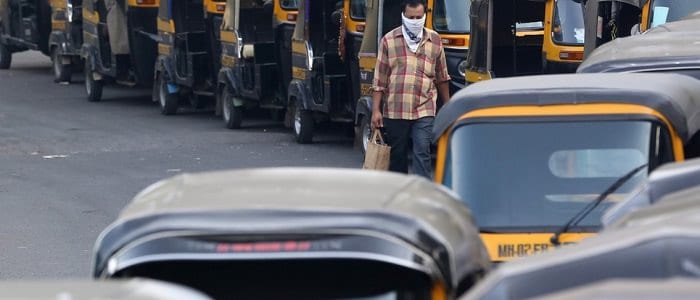
The resilient and efficient response is the need of the hour. Our greatest victory to the pandemic will be devising efficient as well as resilient options for movement of the people and thus safeguarding the people of the country. As mentioned earlier that we do not have a second chance against the pandemic. Proper implementation and monitoring being the issue it becomes crucial for ULBs to take an extra effort here. The task of monitoring and feedback can be handed over to various NGOs involved in working for road safety and promoting resilience. Students from various universities can be asked to volunteer for the monitoring and feedback process. They can be motivated by awarding a certificate of appreciation. This will not only help in the process of implementation and monitoring but also empower NGOs and the students.
Related: What is Environmental Planning?, Regional Planning – Need, Importance & Implementation
Access to water & hygiene
The tritest phrase ‘water is life’, yet failure to provide clean water in all the parts of the country. In the light of the coronavirus pandemic, key among protection measures and means to slow down or stop the spread of coronavirus is handwashing with soap. With no water, it is impossible to wash hands. Water is such an essential resource during this trying time, but 40% of the world’s population do not have access to water. Though having piped water connection, one billion people are finding it challenging to wash hand frequently because of regular water cut-offs.
One key challenge in ensuring the virus does not take hold in India’s populous countryside will be to ensure adequate hygiene and hand-washing practices. Official data suggests that access to water, and the practice of handwashing is significantly lower in rural parts. The lack of water availability in the rural households force people (usually women) to go out to fetch water from common or public water sources, making physical distancing difficult. Limited access to water and the absence of hygiene could pose significant challenges in the combat against the coronavirus pandemic in several parts of rural India. There is a need for effective actions to expand the water supply not only in the battle against COVID 19 but also to take a step towards building resilient communities and eradicating the root cause of lack of water supply.
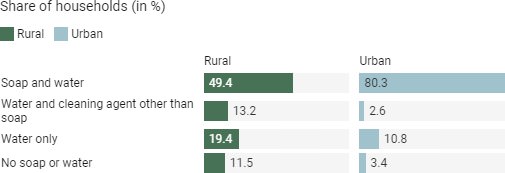
To defeat the coronavirus and provide clean water in slum areas, local portable tap stations should be constructed. These tap stations can be simple two-bucket hand washing stations, one with a spigot and a mix of water and chlorine to kill viruses and other harmful pathogens and another bucket below it for capturing the used water. This will significantly improve access to running water and soap for handwashing and hygiene. Various UN agencies and Non-profit Organisations can help to implement it. The agencies can also train communities and create awareness among them about the importance of handwashing and hygiene. They can provide public address systems with pre-recorded sensitisation messages to the communities. They can distribute posters in varied local languages and post them at strategic locations across the cities. This will create behavioural change among people, drastically reducing communicable diseases that spread through poor hygiene practices. A small initiative can be taken up by restaurants and shops; they can place the water and soap outside their entrances.
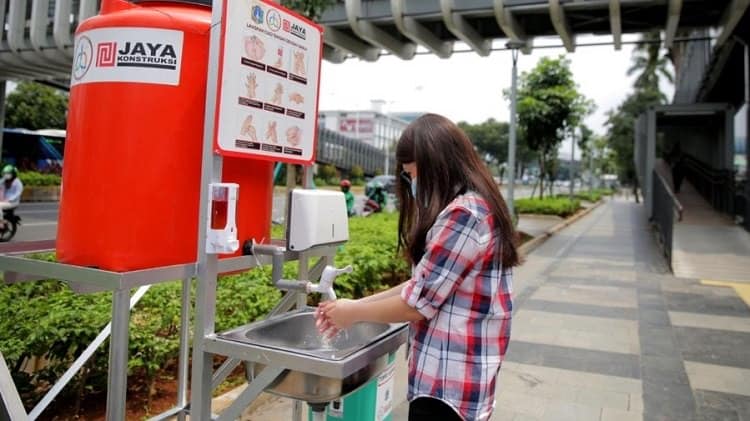
According to a recent analysis by Delhi-based think tank Centre for Science and Environment (CSE), around 20-40 litres of water in this new normal is used every day, with the assumption that every person cleans their hands at least 10 times a day, instead of a usual average of five times a day. These extra litres of water used for handwashing in a nations that are already struggling with water scarcity, may worsen the situation, fear a section of people and experts. However, the pandemic has already suggested handwashing, it is deemed that people would want to adopt this practice of washing hands for their life ahead. Coping up with the water scarcity problems system like “Public Hand wash station” can be made available on the streets by the local government.
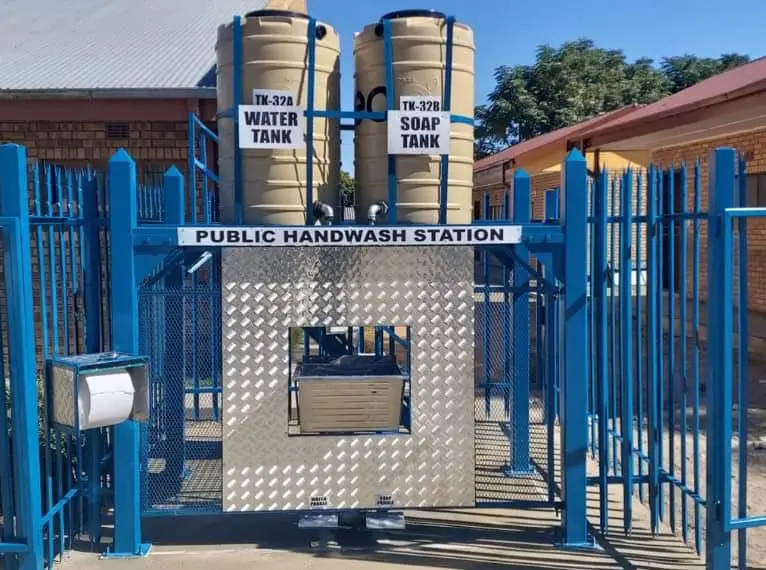
These tactics will help in defeating the coronavirus. But all these solutions are temporary. There is a need for concrete efforts for water supply management and to ensure safety form disease outbreak and other disasters in future. To steepen the water deficit curve, water should be managed and allocated efficiently. Limit for water withdrawal should be set for industry and agriculture, and more investments should be made for water-efficient irrigation. Another obstacle that we need to overcome to ensure the better water management is water pollution. Water pollution not only reduces the adequate supply of water but also adds the burden of health issues. There is a need to invest in treatment of domestic and industrial wastewater. Effective long-term water management policies can help prevent the impacts of future water crisis.
Pandemic is a great realisation that the system needs to revisit and rethink in terms of their current operational approach and needs a holistic approach towards urban solutions. Such a crisis always help planners to shape cities in a more resilient, sustainable and flexible way. While envisioning a pandemic-resilient city our cities might look much as same as they do today- but a with little more open spaces, with better liveable conditions, with sustainable mobility options and with access to more resources for all.
Author Bio:
- Srishti Jaipuria has an undergraduate degree in B.Tech Planning from the College of Engineering Pune. She has also completed a summer program in the city from the University of California, Berkeley. With a solid foundation in urban studies—including urban, rural and infrastructure planning, sustainable development, and land use, her background has prepared her to excel as an urban planner.
- Virag Hanote is an Urban/ Transport planner pursuing his master’s in Transport Planning from the School of Planning and Architecture, New Delhi. He has completed his UG from the College of Engineering Pune. He is keenly interested in data analytics and works related to Sustainable development, Integrated Urban transport, and sustainable mobility.
For further reading and getting more information about Urban Planning you can read the following articles (all articles open in new tab/ window):
- Urban Planning Job Description
- Why political agendas never actually solve your problems whereas planners can!
- Planning process without planners
- Loss to community because of incompetent planners
- Planners as knowledge workers
- Understanding the limitations of planning
- Urban Planning – Largely Unknown Profession
- Importance of Urban Planning